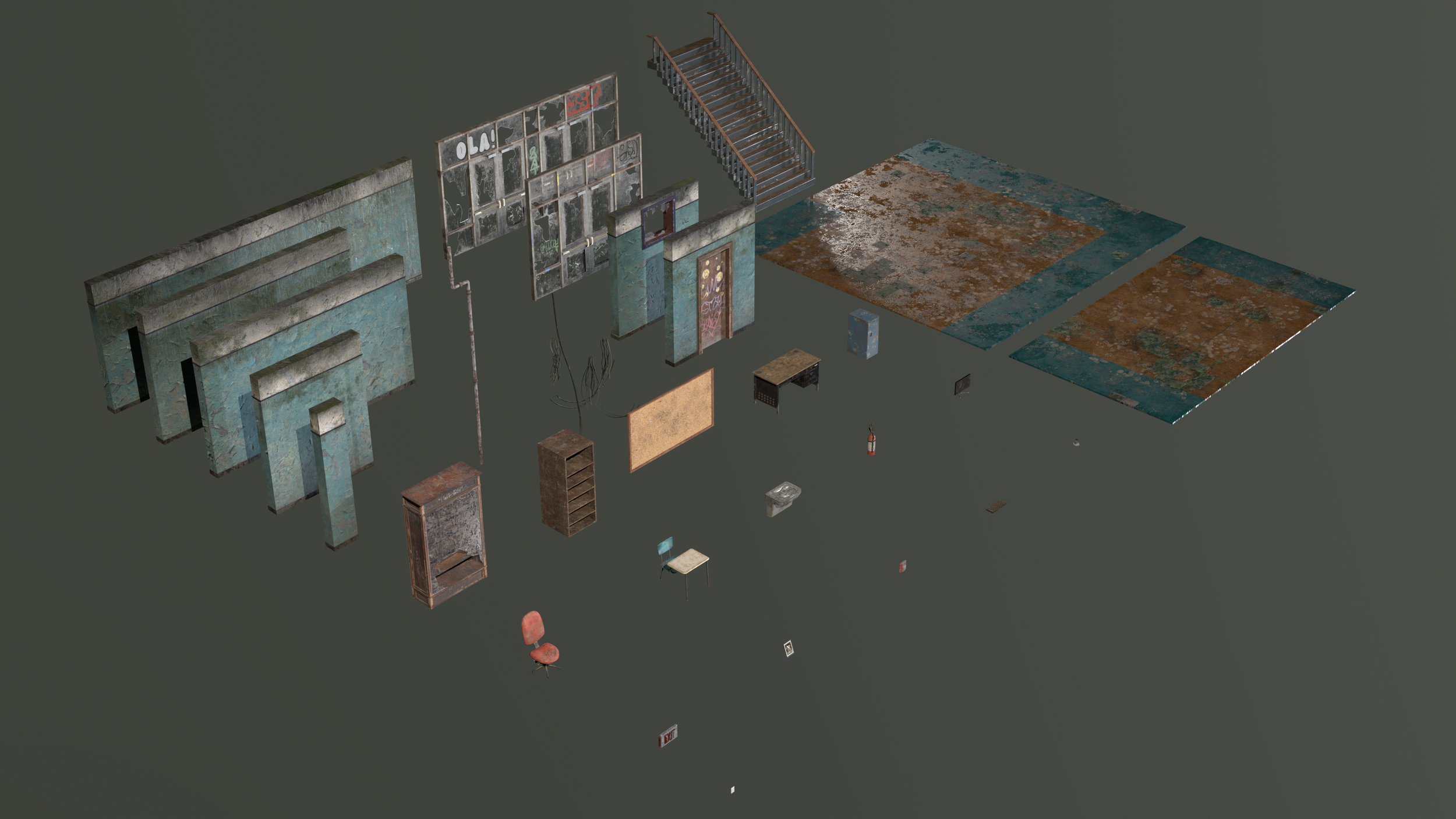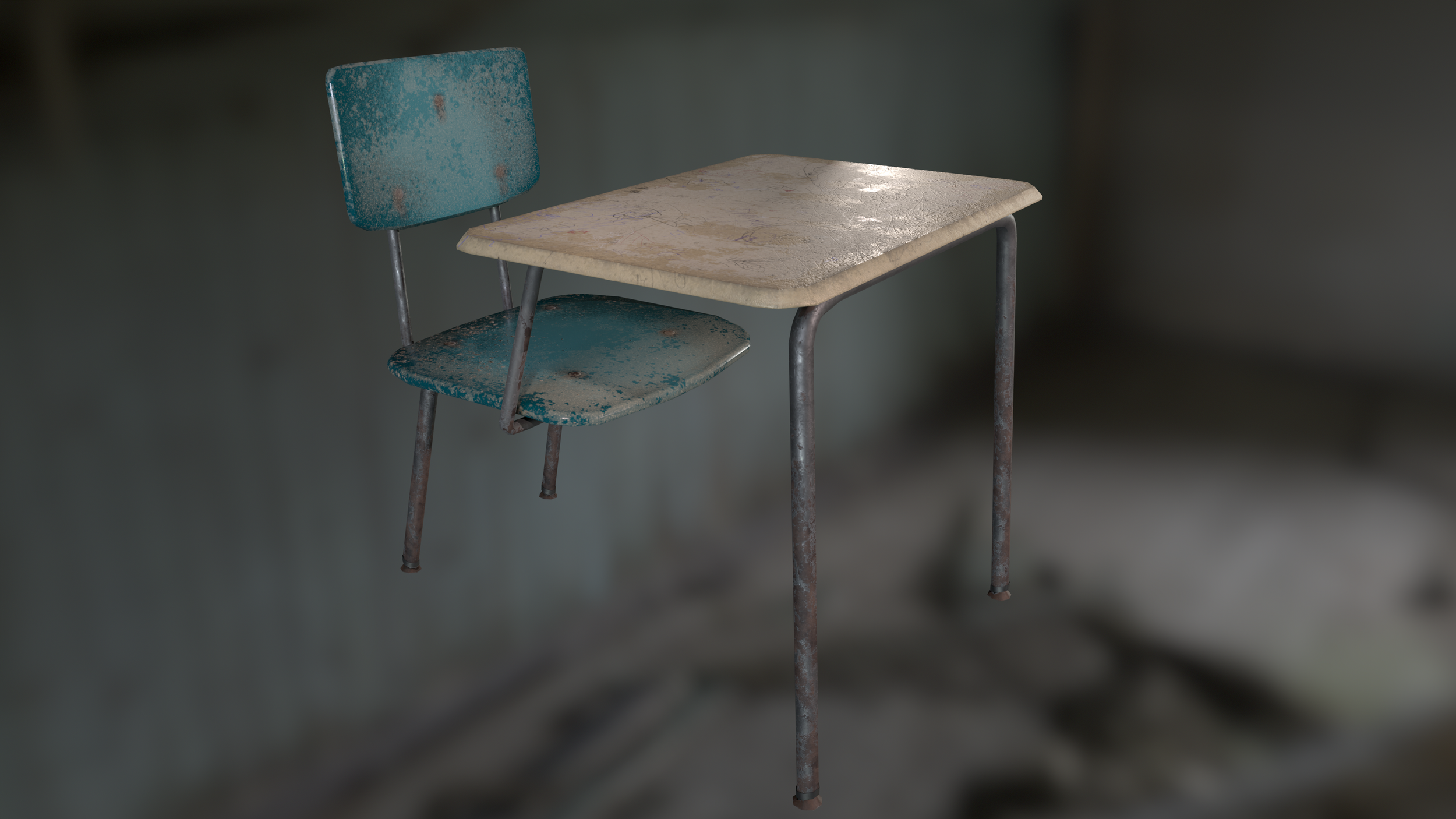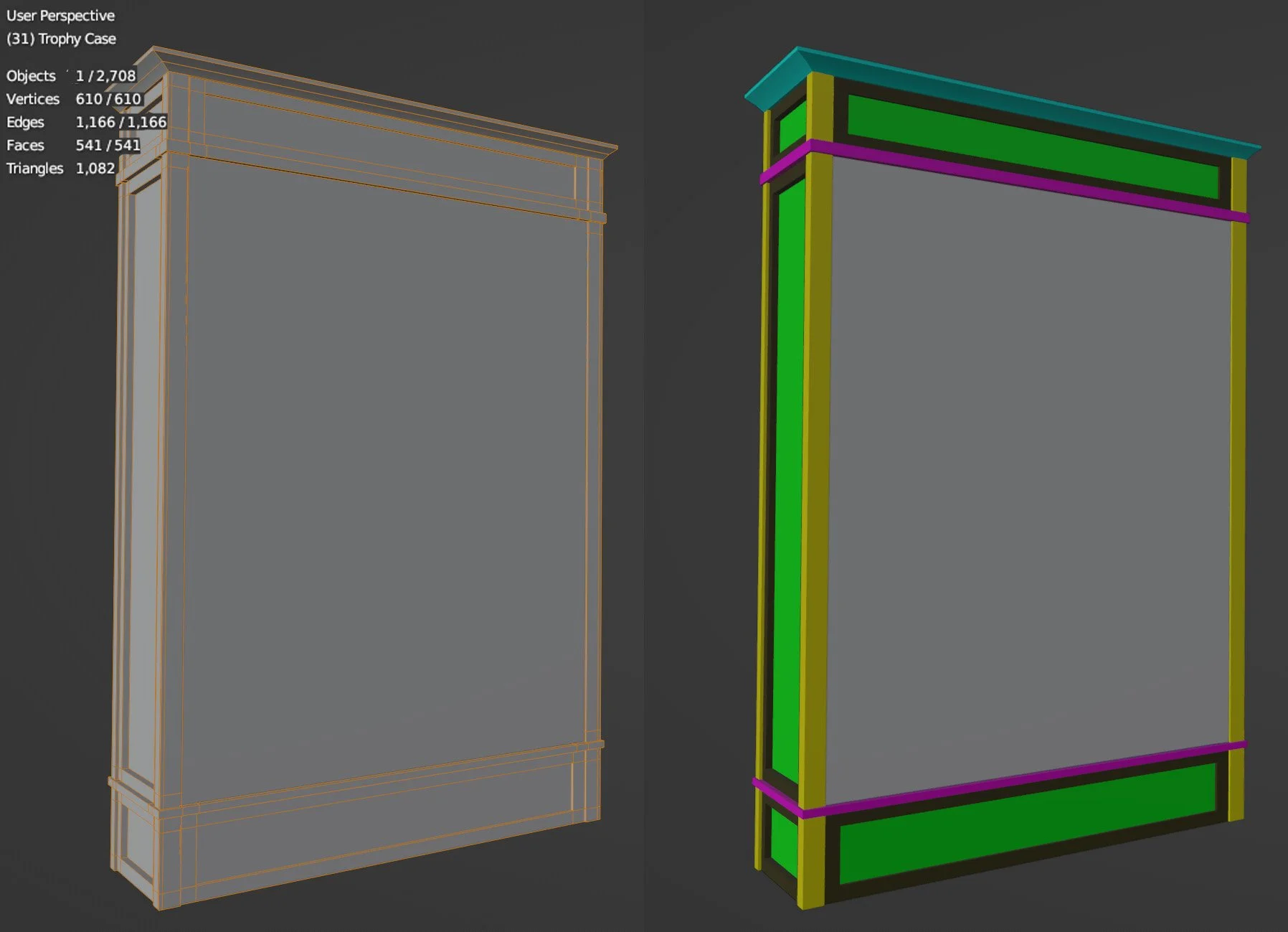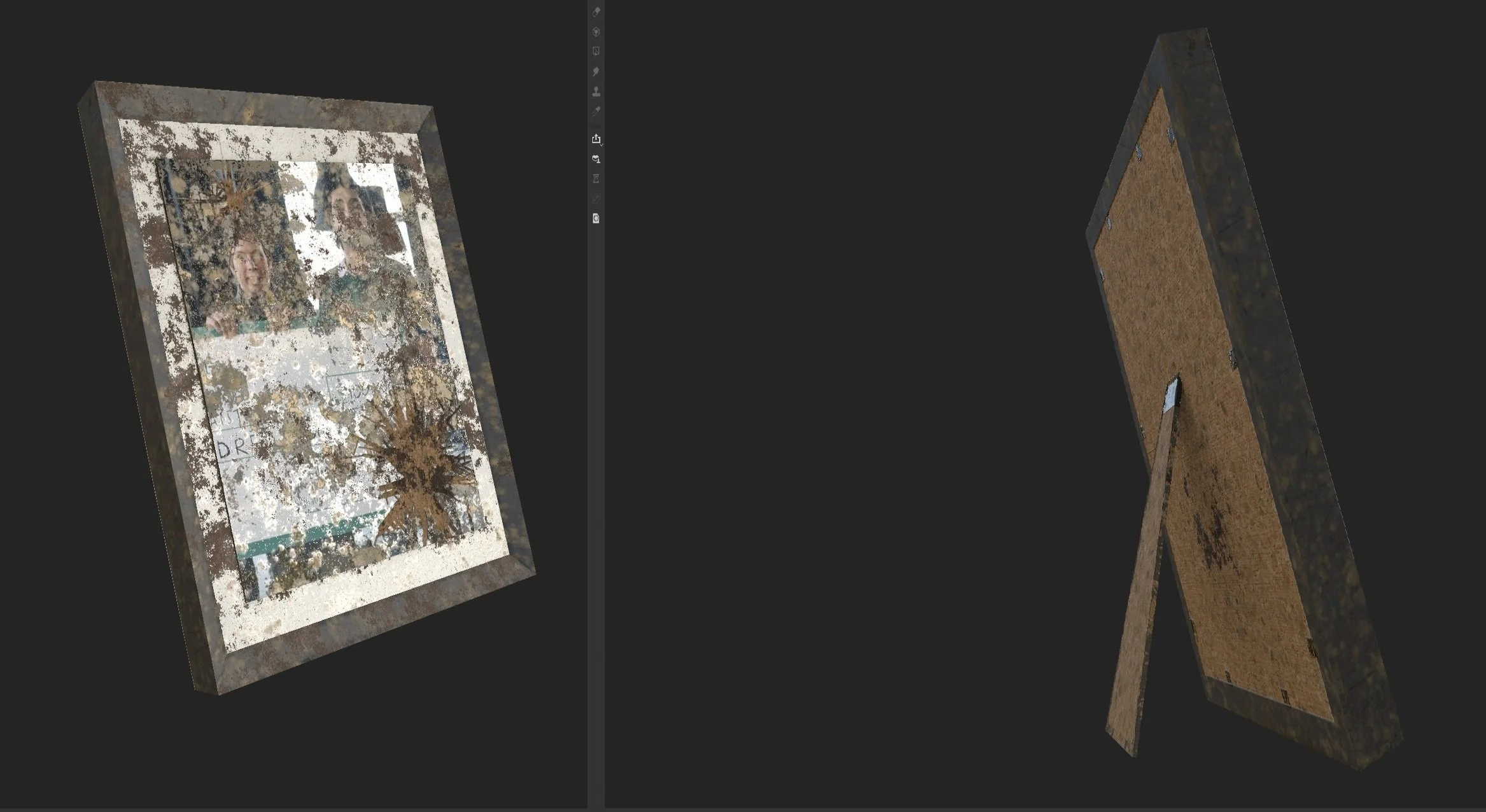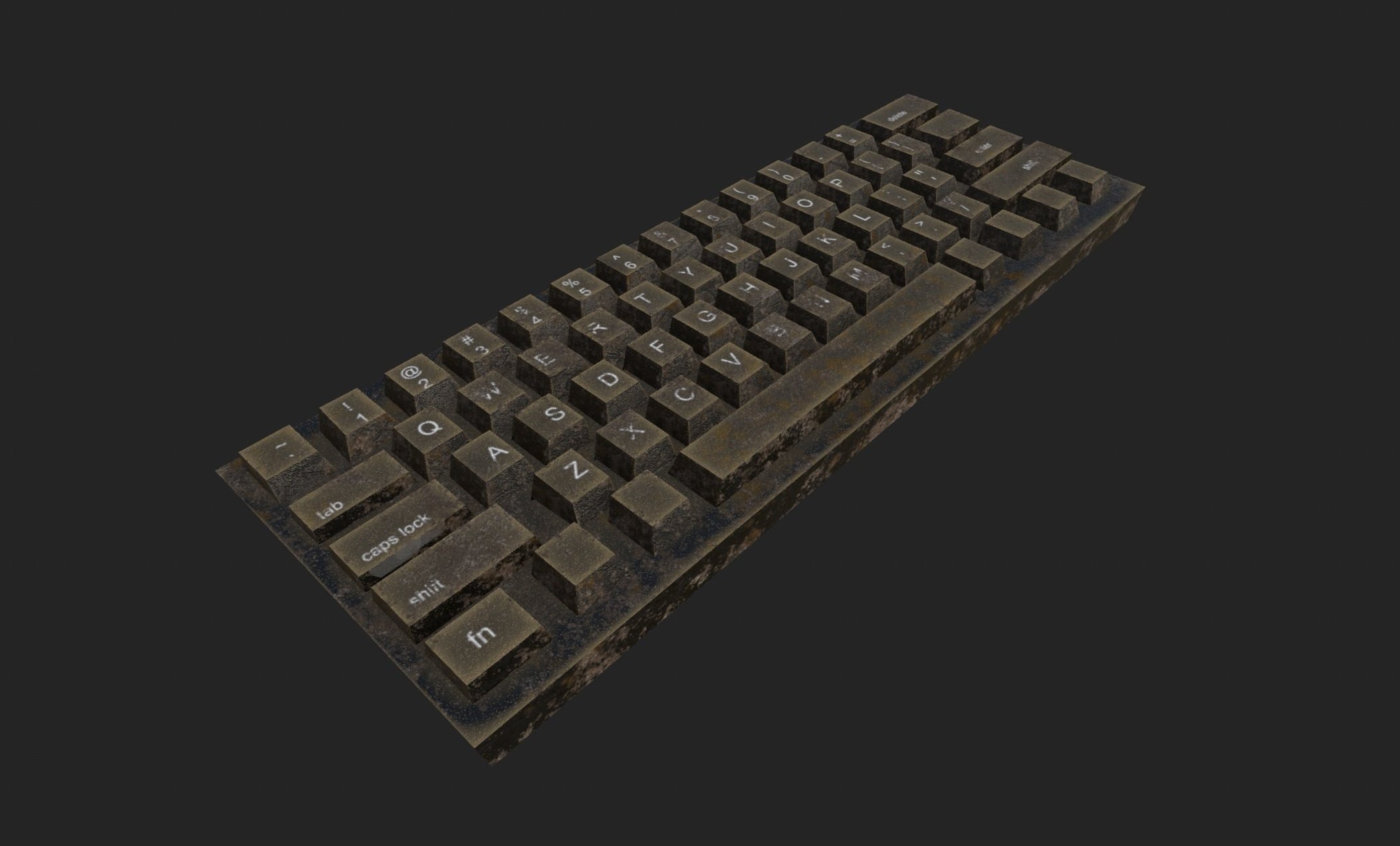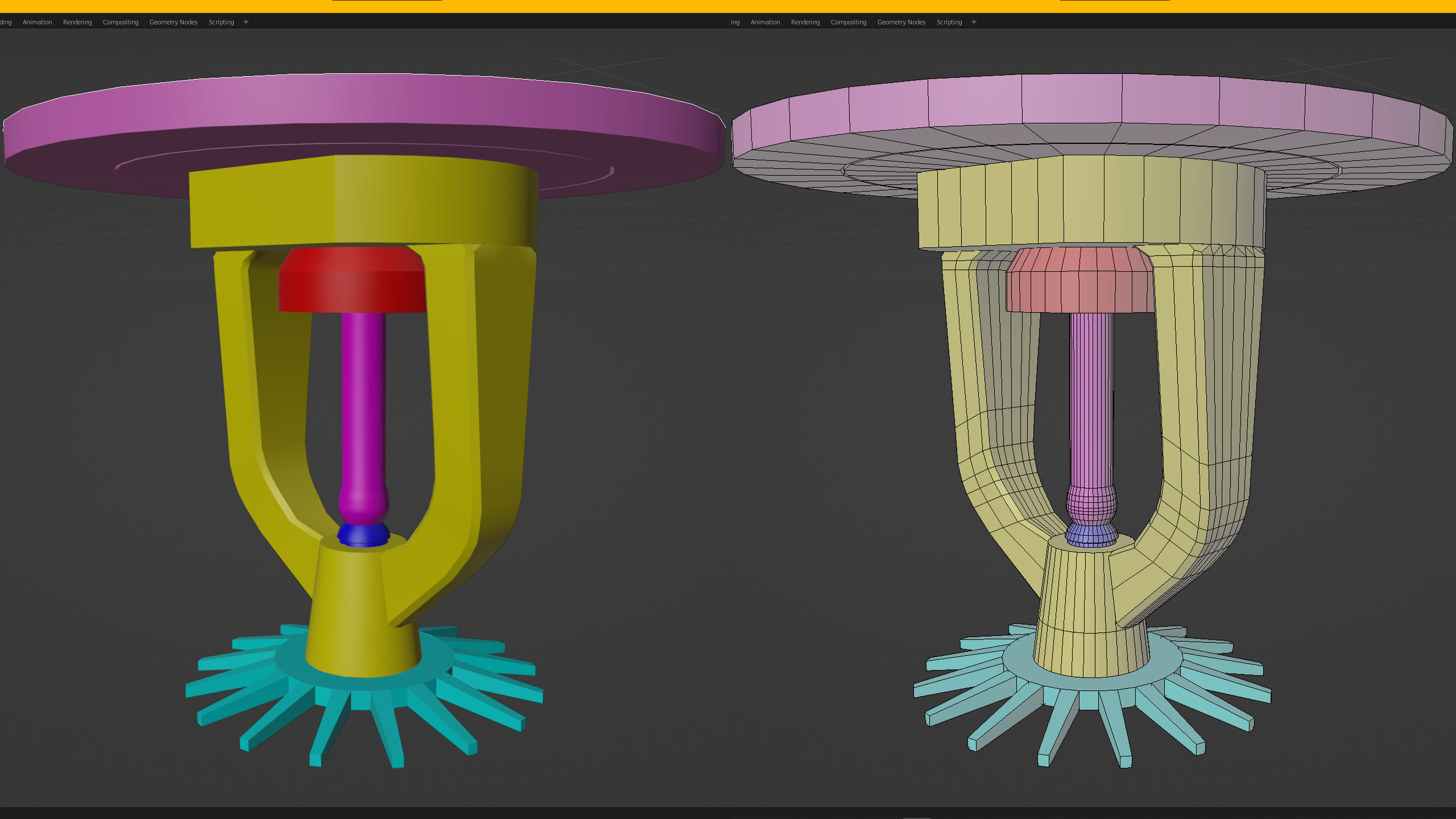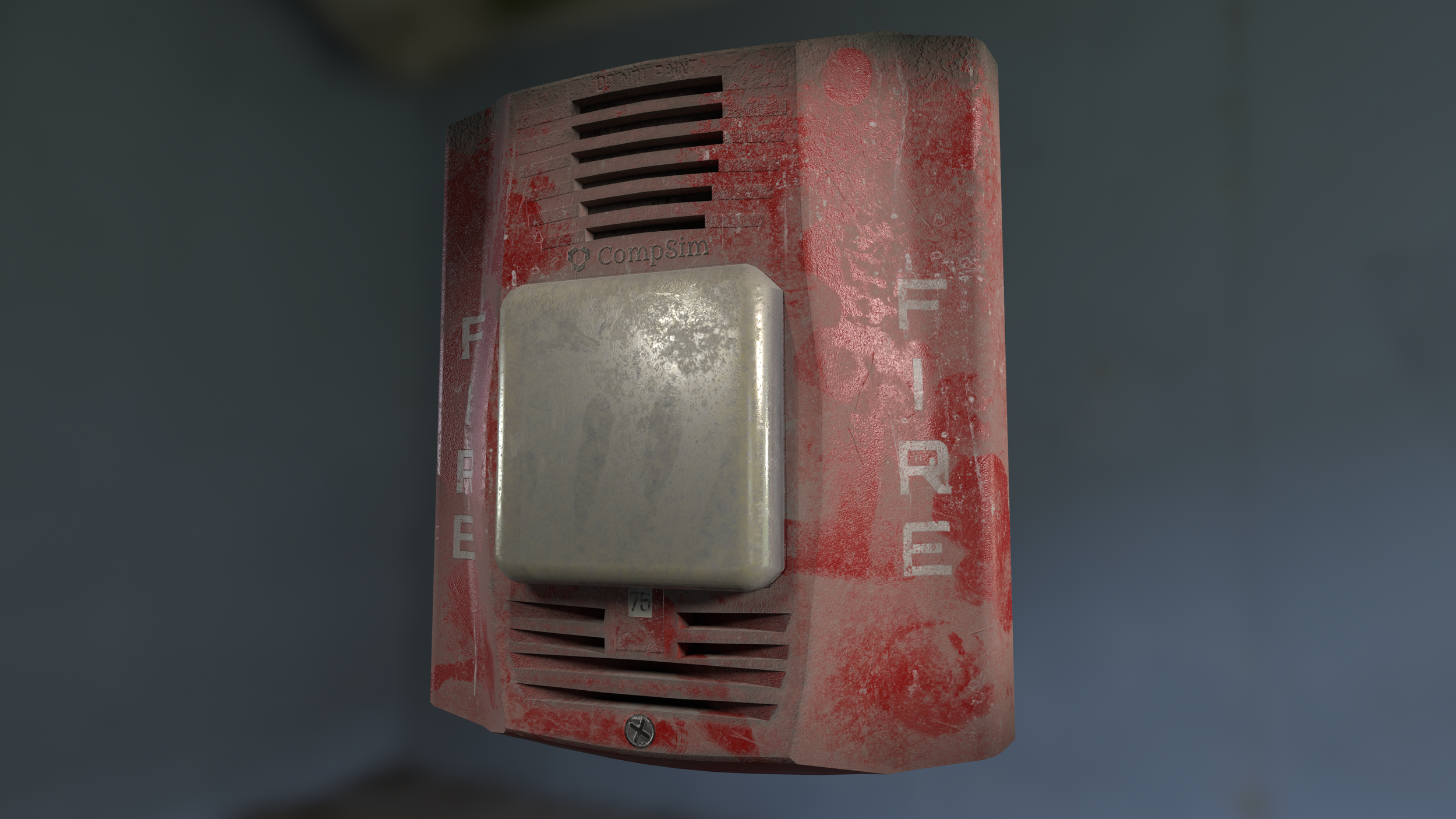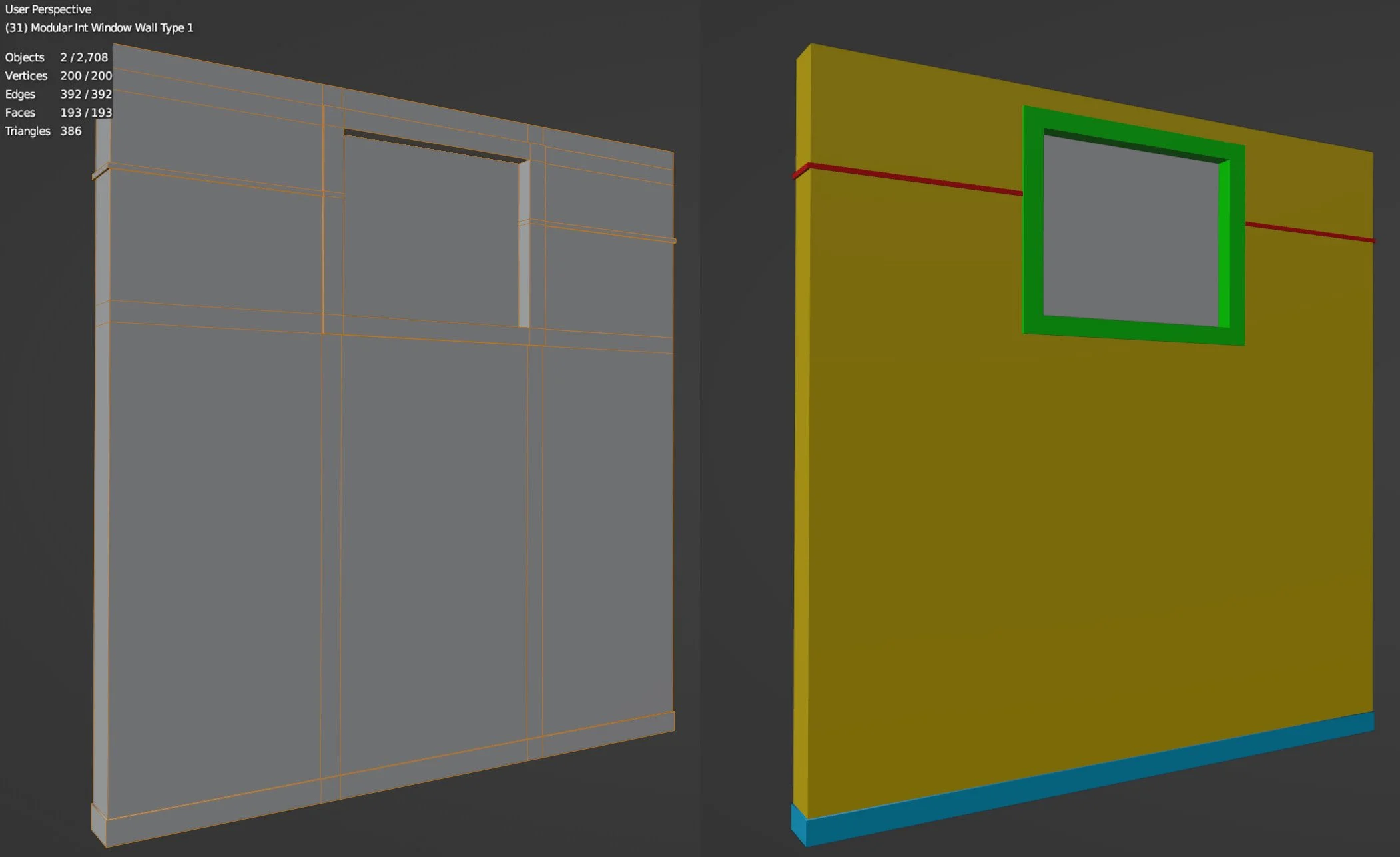Abandoned School Environment
*This page is not appearing correctly on some monitors, I am working to fix the issue.
Abandoned School Environment
UE5 Alberto Rosado - 2023
Summary
With this environment I wanted to showcase my level design, environment art, and lighting skills.
Using inspiration from real abandoned locations in Chicago, and from titles such as Call of Duty, The Last Of Us, and Escape From Tarkov, I wanted to create an abandoned environment which balanced the gloomy forgotten atmosphere with the warmth of the daylight.
Development Information
Role: Environment Artist, Lighting Artist
Tools: Unreal Engine 5, Blender, Substance 3D Painter, Quixel Megascans, Quixel Bridge, Marmoset Toolbag, Midjourney AI, Photoshop, Illustrator, After Effects
Duration: Late December 2022 - April 2023
Theme: Survival, Action-Adventure
Status: In-Progress
Abandoned School Environment
UE5 Alberto Rosado - 2023
My Role As Environment Artist
After previous outings to abandoned urban areas in Chicago I became inspired to create an abandoned school hallway environment. Using some of my own photographs along with reference images of abandoned schools found online, I created a reference board to help myself understand what assets I needed to model and plan for. When creating the reference board I wanted to create a dark and moody atmosphere with some splashes of sunlight. Once I had a good variety of assets across my reference board, I had enough asset and environment keywords to use towards generating AI concept color palettes. The purpose of doing so allowed me to quickly create and iterate upon ideas for designing the environment lighting and the composition of various camera angles.
Abandoned School Environment
UE5 Alberto Rosado - 2023
To create the AI generated concept images, I utilized Midjourney AI’s discord bot. For the text-prompt, I included keywords from my asset list and descriptions of an abandoned school hallway based on different aspects curated from my reference board that I believed would look cohesive together after exploring abandoned urban environments myself. To recreate images similar to my reference images, the following text-prompt can be fed into Midjourney AI’s discord bot:
“american abandoned school hallway, books and paper scattered on the floor, school lockers, loose cables hanging from ceiling, unreal engine, cool tones, overgrown foliage, ferns, dramatic lighting, mood lighting, lumen, nanite, quixel megascans, 4k, photorealistic, ambient occlusion, screen-space reflections, --ar 3:2”
Abandoned School Environment
UE5 Alberto Rosado - 2023
Environment Floorplan
Adobe Illustrator Alberto Rosado - 2023
Compiled AI and Reference Images
Midjourney AI - 2023
To save time on the modeling and texturing phase, I created modular structural assets. These assets include floor and ceiling tiles, 3 walls which ranged from short to long size in length, walls with interior doorways and doors, entrance walls with exterior doors, and walls with windows. Before I began the modeling process, I designed the floor plan of the environment to ensure that all the assets in the list were going to be used. For every object and prop except the lockers, I only used one material and categorized each material into different layers by vertex painting each mesh and using the data for its material ID. To avoid a repeating locker, I broke up patterns by creating 3 variants of locker materials for the locker body, locker door, and locks.
After the modeling phase, I exported and painted my models in Substance 3D Painter. When baking texture maps I included the material ID colors to be baked in as the mesh’s ID colors, which allowed me to edit and apply material layers to the objects quickly and efficiently. I strived to achieve a consistent style by texturing each object the way it would normally look if it was upkept, and then continued to add layers which would make the objects look aged and dirty. With this in mind, I also thought about the possible history that each object and prop has been through; an example would be whether a computer monitor had been hit, thrown, or stepped on.
Abandoned School Environment
UE5 Alberto Rosado - 2023
ALBEDO
Trophy Case Stats & Material ID
Abandoned School Hallway Assets
Marmoset Toolbag Alberto Rosado - 2023
In the vertex painting phase, I kept my models unmerged and was able to easily select each section of a given model to apply the material ID colors. Once merged, if I needed to, I would decimate the model to reduce vertex and face count, otherwise I would move on to UV unwrapping the model. Before exporting a mesh from Blender, I made sure to go through my quality control checklist that checked for mesh names, material names, UV maps and UV map names, origin/pivot points, duplicate vertices, ngons, inverted normals, accurate smooth and flat shading, and correct material ID colors. To ensure high quality assets and avoid having to go back to fix any shading issues, I imported all objects and props into UE5 as well, and did a second quality check before building the environment. The UE5 quality check mainly consisted of checking for shading issues, and checking to see if generating nanite meshes caused issues.
Abandoned School Environment
UE5 Alberto Rosado - 2023
I began by building the structure of the hallway which included the floors, walls, doorways, windows, and ceilings. Due to my objects being modular, much of the structure objects are duplicate meshes, or multiple instances of static meshes, with variations of the same material. Similar to my method of texturing props, I built the environment to look the way an upkept school hallway would look like, then I continued to disorganize the props while thinking of how urban explorers might have interacted with the space. To set dress props efficiently, I made sure to leave them at set heights and positions relative to my floor tiles and wall assets so that I could easily place them into the environment without needing to adjust them afterwards. Using my reference images as inspiration, I placed cameras at different positions along the environment to focus on set dressing with compositional techniques. Set dressing through a camera lens, I first placed all my primary props which included the school lockers, then my secondary props like the water fountain, and lastly my tertiary props which include books, foliage, and fire sprinklers.
A new technique I learned in Blender while creating this environment after researching online was creating a peel effect to model the peeling wallpaper from the ceiling and walls. I created a plane mesh for the peeling wallpaper and subdivided it into flakes, along with a separate sphere. The sphere is meant to create a collision with the plane by adding a gravitational force to the sphere mesh, which pulls the sphere through the flaked plane to bend the flakes and create a peeling effect. To achieve this effect, I triangulated the subdivided plane and used an explode modifier to separate the flakes. I then animated the sphere with a cloth collision in the timeline to move through the plane. When I reached a desired peeling effect, I paused the flaked plane’s cloth simulation and baked the physics to it’s own mesh. I did this several times to create different variations of peeling walls and peeling ceilings.
Office Chair Stats & Material ID
Student Desk
Student Desk Stats & Material ID
Locker Variant 1
Substance 3D Painter Alberto Rosado - 2023
To create a more immersive experience, I added physics simulations to most of the small props on the ground. After adding simple collision boxes to the interactable props I ran into an issue where the collision between the player character and small props caused the player character to aggressively rotate or teleport from one position in the world to another. One factor that was contributing to this issue, was the player character’s ability to continue walking on a prop that it had collided with, even when the prop was already suspended in the air. By adjusting the walkable slope angle I was able to constrain the player character from walking on flying objects, which solved the teleporting issue. After some researching I found that when a large collider, in this case the character’s capsule collider, interacts and simulates physics with a small collider, which would be the prop collider, weird results are generated due to the colliders’ large size differences. Adding a smaller capsule collider at the base of the character’s feet for the purpose of interacting with smaller props solved this aggressive character rotation issue.
When optimizing the level, the main issue was the FPS rate which dropped after adding additional objects to the Lumen lighting system, and increasing the particle system’s maximum particle amount. I decreased the maximum uniform size of the dust particles, which also decreased the render distance of the particle system relative to the player character. As a result, the scene could run smoother by only making the dust visible when the player was next to it, instead of continuously rendering new particles that took up an insignificant amount of screen-space. To further increase the FPS rate, I reduced nanite triangle amounts for each prop depending on prop size. For small props, I reduced triangle percentage to 30%, for medium props 50%, and for large props 70% of their original triangle amount. By using different camera angles and the Required Texture Resolution viewmode, I was able to see the ratio between an objects current texture resolution, and my GPU’s wanted texture resolution, to lower texture sizes depending on the importance and the amount of space taken up by an object. Using the Property Matrix, I bulk edited all the texture sizes of the textures being used in the level to their needed sizes which improved performance.
Please watch in 4K for best viewing experience.
Abandoned School Environment
UE5 Alberto Rosado - 2023
My Role As Lighting Artist
With the assistance of Midjourney AI, I created different color palettes to see which one would best convey my vision of an atmosphere which was warm but also uninviting. I was most satisfied with the cool blue/green tones which contrasted the warm glow of the sunlight. This combination reminded me of the disquieting atmosphere I experienced when visiting abandoned urban environments in Chicago. Although the daylight brought a sense of warmth, the stillness and emptiness of these spaces combined with clues of previous explorers passing through, almost made it seem as if something was watching me. I attempted to recreate this sensation by including warm splashes of light in the environment using a directional light with light shaft occlusion and bloom. I was able to keep the shadows dark by setting the directional light at a low intensity with an increased indirect lighting value. To add to the abandoned atmosphere, I added volumetric fog with a tan tint to make the building appear more dusty. In an effort to make the dustiness of the atmosphere more obvious, I created a Niagara suspended particle system and added it to areas of the environment where god rays were visible. I added transparency to the color of the particles to make them dark and transparent when outside of god rays, and easily visible when inside a god ray.
Increasing the amount of objects in the Lumen lighting system was costly, which is why I made sure to only include the structure of the building, and objects that were either directly lit, or near direct sunlight. Some of these objects include the lockers along the walls, the foliage and medium to large props near the entrances, and small props with bright colors being directly hit by sunlight. In some cases, I had to purposely exclude props being directly hit by sunlight from the Lumen lighting system. In one instance, the red office chairs near the entrance were contributing too much bounced light into the environment which turned the entrance bright red, so I had to disable Lumen on most of them. Although enabling Lumen on objects adds to the atmosphere of the environment’s lighting, it may sometimes make the scene appear brighter. To counter this I slightly increased the intensity of the scene’s midtones contrast level using a post-processing volume, in addition to the intensity of the scenes highlights.
Quad Door Wall
Office Chair
Abandoned School Environment
UE5 Alberto Rosado - 2023
Quad Door Wall Stats & Material ID
NORMAL
Fire Alarm Strobe Stats & Material ID
NORMAL
Abandoned School Environment
UE5 Alberto Rosado - 2023
Student Desk Textures
Trophy Case
Trophy Case Textures
NORMAL
Office Chair
NORMAL
Drinking Fountain
ALBEDO
My Duties Included
Researching real world abandoned urban areas
Designing the floorplan
Creating environment assets
World building
Unreal Engine 5 implementation
Lighting the environment
Modular Assets & Props
Drinking Fountain Stats & Material ID
NORMAL
Interior Door Wall
Interior Door Wall Stats & Material ID
ALBEDO
ORM
ALBEDO
ALBEDO
ALBEDO
NORMAL
Interior Door Wall Textures
ALBEDO
NORMAL
Drinking Fountain Textures
Fire Alarm Strobe
Fire Alarm Strobe Textures
ORM
ORM
ORM
ORM
ALBEDO
ORM
ORM
ALBEDO
Quad Door Wall Frame Textures
NORMAL
Quad Door Wall Windows Textures
ORM
NORMAL
Interior Door Textures
ALBEDO
ORM
Interior Window Wall
Interior Window Wall Stats & Material ID
ORM
Interior Window Wall Textures
NORMAL
ALBEDO
ORM
NORMAL
Window Textures
Teacher Desk
Teacher Desk Stats & Material ID
ALBEDO
ORM
Teacher Desk Textures
NORMAL
Office Chair Textures
Interior Wall
Interior Wall Stats & Material ID
ALBEDO
Interior Wall Textures
NORMAL
NORMAL
ORM
ORM
ALBEDO
ALBEDO
NORMAL
ALBEDO
ORM
ORM
Locker Body Textures
NORMAL
Locker Door Textures
NORMAL
ALBEDO
ORM
Lock Textures
Trophy Case Glass Textures
NORMAL
ALBEDO
ORM








